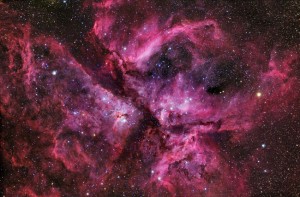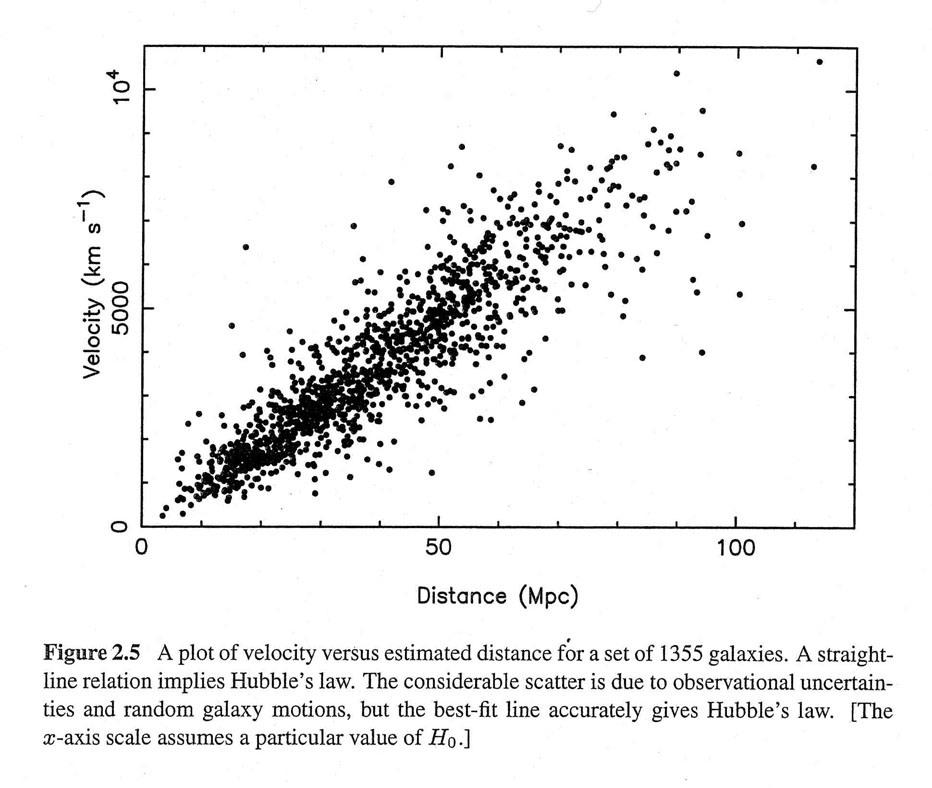 The medium between the stars is called interstellar medium. It consists of extremely dilute mixture of gases (neutral, ionized etc) dusts, cosmic rays and magnetic fields. The chemical composition if interstellar medium is about 90% hydrogen, 9% helium and 1% heavy elements. The matter consists of 99% gas and 1% dust by mass. The details of various matter present in interstellar medium are as follows:
The medium between the stars is called interstellar medium. It consists of extremely dilute mixture of gases (neutral, ionized etc) dusts, cosmic rays and magnetic fields. The chemical composition if interstellar medium is about 90% hydrogen, 9% helium and 1% heavy elements. The matter consists of 99% gas and 1% dust by mass. The details of various matter present in interstellar medium are as follows:
(a) Molecular clouds (): extremely cold
(b) Neutral hydrogen (H): cold / warm
(c) Ionized hydrogen (HII): HII region / coronal gas
Mckee and Ostriker proposed three phase interstellar medium in the year 1977. This classification is based on the states of Hydrogen (molecular form, neutral form and ionized form). These gases emits detectable radiation:
:
CO emission lines / UV absorption lines
HI: 21 cm radio emission and absorption lines
HII: optical emission lines, Bremsstrahlung soft x rays
The composition of these gases in the Interstellar medium are as follows:
| State of Hydrogen | Fractional volume | Temperature (K) | Density atoms/cm cube | Classification | Obervational technique |
| Molecular |
< 1% | < 50 K | Molecular cloud | Molecular emission / absorption lines | |
| Neutral (H) | 1% – 5% | 50 – 100 | cold neutral medium | 21 cm absorption | |
| Neutral (H) | 10% – 20% | 1000 – 5000 | 0.1 – 10 | warm neutral medium | 21 cm emission |
| Ionized (HII) | 20% – 50% | 0.01 | warm ionized medium | H alpha emission | |
| HII Region | ~ 1% | ionized | H alpha emission | ||
| Hot ionized (HII) | 30% – 70% | coronal gas | x-ray emission |
Interstellar dust
Interstellar dust consists of particles of silicates or carbon compounds, ice or carbon compounds. These dust particles are extremely small (the largest ~ atoms size or 0.5 micrometer; the smallest <
atoms) just a fraction of micron across which happens to be approximately the wavelength of blue light. The particles are irregularly shaped.
When light from other stars passes through the dusk, the light will be completely blocked leading to dark area called dark nebula. The Horsehead nebula is an example of this. When the dust reflects the star light, the region visible to us is said to be reflection nebula (example: NGC1999). In general , light passing through a duct cloud may not be completely blocked causing extinction. The extinction depends upon the density of the dust as well as wavelength of light.
Cosmic rays
Cosmic rays are energetic charged sub atomic particles originating from outer space. It includes protons, nuclei, relativistic electrons etc. Cosmic rays can have energies of over far higher than
that man made particle accelerator can produce. Because of the accelerated charged particle, Zeeman splitting of 21 cm line takes place.






